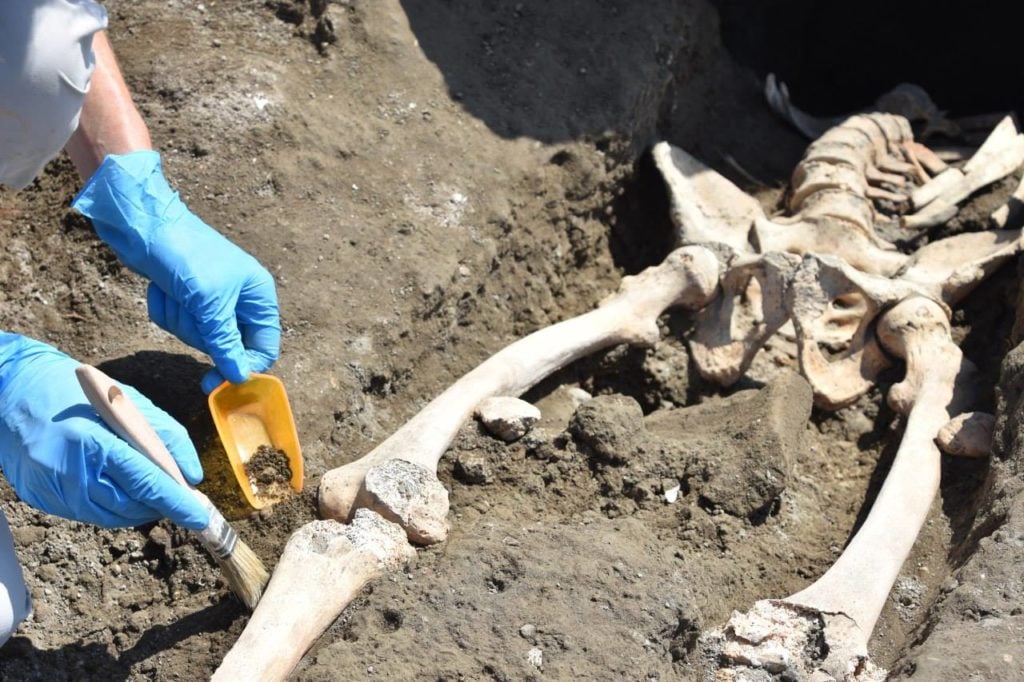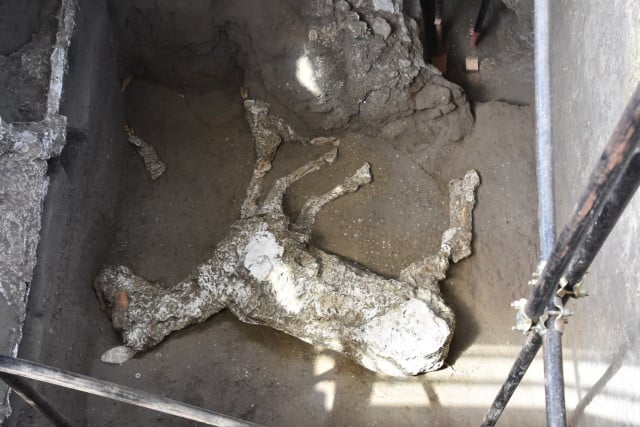Almost 2,000 years after its destruction, the ancient city of Pompeii is still yielding new discoveries. Archaeologists at the historic site have uncovered a new skeleton of a man who was fleeing the city ahead of the eruption of Mount Vesuvius, only to be crushed to death by a falling stone.
Archaeologists believe the man, thought to be in his thirties, was slowed down by a bone infection in his leg, according to the New York Times. Spared from the fate of so many of Pompeii’s citizens, who suffocated to death, frozen in time as they were buried by the volcano’s ashes, the man nonetheless met a gruesome end. Turning behind him to face the explosion of pyroclastic flow—lava, hot ash, and gases—the man was suddenly decapitated by a massive block of stone, a deadly projectile sent hurling through the air by the powerful eruption.
“This exceptional find,” said Massimo Osanna, the director of the Parco Archeologico di Pompei, in a statement. “Beyond the emotional impact of these discoveries, [they]…contribute toward an increasingly accurate picture of the history and civilization of the age.”
The announcement speculated that the stone, “violently thrown by the volcanic cloud,” was “perhaps a door jamb.” The man’s headless body was found in the Regio V section of the Pompeii site, near the House of the Silver Wedding and the House of Marcus Lucretius Fronto. The area has remained largely unexcavated over the centuries; archaeologists began working there in March.

This skeleton of a man killed by a falling rock while fleeing the eruption of Vesuvius was recently discovered at the archaeological site of Pompeii. Photo courtesy of the Soprintendenza Archeologica di Pompei.
Earlier this month, researchers also announced another new discovery at a separate Pompeii archaeology site, in Civita Giuliana. There, according to the Local, they found the remains of a horse that died in the eruption and were subsequently able to make a full cast of the animal. The site, identified as a stable, also contained kitchen tools and a grave built after Vesuvius erupted, providing evidence that people continued to live in the area following the blast.
One of history’s most famous natural disasters, the eruption of Mount Vesuvius in 79 AD is thought to have killed some 2,000 people, destroying the ancient cities of Pompeii and Herculaneum.

The plaster cast of a horse, discovered in an ancient stable outside Pompeii. Photo courtesy of the Parco Archeologico di Pompei.
The state of the ruins of Pompeii has been cause for concern in recent years, with the ancient buildings continuing to deteriorate. The Great Pompeii Project, headed by Osanna, was started in 2012 with an initial budget of €105 million ($140 million) aimed at conserving the historic sites. It has hit many speed bumps along the way, but an initial 2015 restoration deadline was extended to ensure its much-needed work would be completed.